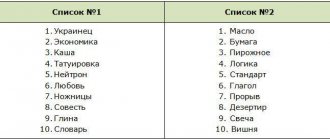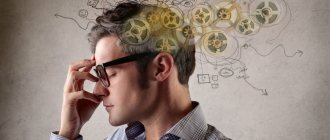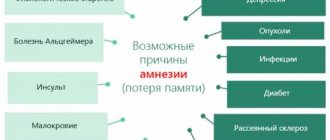The brain is one of the most mysterious structures in the human body. Thanks to him, a person breathes, walks, thinks. It is the brain that sends signals to all systems of the body so that they perform certain tasks.
The whole universe - this is how the human brain can be characterized. Billions of neurons forming up to several tens of thousands of connections - sometimes even specialists find it difficult to understand such a plexus. What can we say about ordinary people?
The country even has a special Brain Institute, which literally studies this organ far and wide from the point of view of both its physiology and capabilities. Naturally, against the backdrop of such a complex organization, many myths and speculations are born regarding the work of the organ.
Happy brain
is a Russian partner of the French medical research group sbt-corp, specializing in studying the cognitive abilities of people and finding options for their development. This team, consisting of the best specialists in various fields, such as neurophysiology, neurobiology and neuropathology, has carried out many diverse studies and experiments, which have resulted in the discovery of several sensational projects.
The website happymozg.ru is the Russian-language version of the happy-neuron.com platform - a portal for users who do not have medical training, but are interested in developing their abilities.
The site’s employees have set the task of providing the Russian-speaking audience with the latest news and developments from the wonderful world of neuroscience. Thanks to their persistent and painstaking work, a portal was created containing many unique programs created by the best specialists to improve and support the cognitive functions of the human body at the proper level.
Specialists involved in the development of the happymozg.ru service are making sure that an increasing number of people from Russia are interested in neuroscience, and that people without special education can learn about the limitless possibilities of our brain and nervous system.
The company's employees provide residents of our country with a unique chance to take advantage of self-improvement systems developed by the best foreign scientists. Thanks to the “Happy Brain” portal, our compatriots can try for themselves the latest achievements in the field of neuroscience, which are successfully used abroad.
Example of games offered by the company:
A sample game for training auditory and visual memory and remembering names. Game Birdsong. Rules:
Now you listen to the sounds that different birds make:
After listening to the singing, complete the following task:
Once completed, the final step will open:
Well, you get the result:
Quite interesting games, you will like them.
No payment required.
Is 10% our limit?
Everyone knows the theory about the 10% of brain capabilities that people use. She was often voiced in cinema. According to it, a person fully works with only one tenth of all the capabilities that the brain can give him. One of the sources of this belief today is the work of the American scientist and psychologist William James and Boris Sidis . Back in the 1890s, they tested the theory of accelerated child development on who had the highest IQ in history. Dale Carnegie made a similar assumption .
Question answer
Why does the brain “erase” dreams?
There is another theory about why humanity could believe in this belief: it is believed that the idea of 10% was born on the basis of an incorrect interpretation of neurobiological research. The cerebral cortex is so complex that some lesions can be difficult to trace. And misunderstanding of functions could well become the basis of the “decimal theory”.
This theory has long had a refutation, which, however, did not turn out to be so loud that people remembered it. Neuroscientist Bariri Gordon called the theory "ridiculously wrong." He also noted that a person uses almost all parts of the brain and they are active almost constantly. Several facts debunk the 10% theory. First, proven scientific evidence indicates that evolution usually discards everything unnecessary. The brain is quite energy-intensive and requires a lot of oxygen and various nutrients. It can take up to 20% of energy. If 90% of this organ were not used by people and were essentially not needed by the body, the brain would become smaller in size. The theory about the degeneration of unused neurons and connections between them is also similar. If the organ were not used to its maximum, the cells would die en masse, which is not observed in healthy people.
The theory is also confirmed by instrumental techniques: MT and PET scanning. They allow you to see the work of the brain in real time. And it was with the help of such devices that it was proven that the brain is active even during sleep.
In addition, the fact that the brain has several sections, each of which is responsible for its own functions, does not favor the 10% theory. So far, brain researchers who have studied the organ in detail have not yet discovered any redundant or unused sections.
When it's short-circuited in the brain. Neurologist on the origin and treatment of phantom pain Read more
Climate Change and Idiocracy
In search of an explanation for the gradual shrinkage of the brain, some researchers point to a gradual change in the Earth's climate that began 20,000 years ago. Because larger bodies retain heat better, a larger braincase may be better able to cope with colder climates. As the planet warmed, natural selection likely favored shorter people. As skeletons and skulls shrank with rising temperatures, brains became smaller. However, today this is only one of the possible explanations. The fact is that comparable periods of warming have occurred on our planet many times over the previous 2 million years, and body and brain size have regularly increased.
Still from the film “Idiocracy”
Another popular theory attributes the changes to the advent of agriculture, which, paradoxically, initially led to food shortages. Early farmers were not very successful in making a living from the land, and their grain-based diets were devoid of protein and vitamins, which are critical for the growth of the body and brain. As a result, our bodies and brains could become smaller due to chronic malnutrition. However, many anthropologists are skeptical of this explanation, which leads us to perhaps the most troubling conclusion: the best explanation for our shrinking brain size is the theory of Idiocracy, as best described in the 2006 film of the same name.
The film tells the story of a simple guy who becomes involved in a hibernation experiment at the dawn of the 21st century. When he wakes up 500 years later, he turns out to be the smartest man on the planet. No matter how crazy this theory may seem, many researchers seriously believe that Idiocracy has already arrived. What do you think about this? We'll wait for the answer here!
Hemispheres separately - how does it work?
There is a theory, and quite a tenacious one, according to which a person has either one hemisphere of his brain or the other. Moreover, people even often diagnose themselves as “right-hemisphere” or “left-hemisphere” based on the skills inherent in a particular individual. It is believed that creative people are precisely those who have a developed right hemisphere, which is also the working one. Left-handers are logicians.
Question answer
What is the left hemisphere of the brain responsible for?
However, scientists have already debunked this myth a long time ago. The results of a two-year study published in the journal Plos One showed that both hemispheres work equally and simultaneously. Neuroscientists at the University of Utah scanned the brains of 1,000 people of different ages - from 7 years to 29. At this moment, the subjects either lay quietly or read. Measurements were taken at this time on each side of the brain at 7,000 points at once. The results showed that it is true that brain connectivity may be more left-sided or right-sided, but there was no evidence that only one side was working. “The brain is not as clear-cut as the myth makes it out to be. For example, the right hemisphere is involved in processing some aspects of language, such as intonation and stress,” said Jeff Anderson, lead author of the study and a professor of neuroradiology at the University of Utah . This would be extremely ineffective if one half of the brain had to constantly be more active than the other, the scientist says.
What is the right hemisphere of the brain responsible for? More details
All about brain diseases and headaches
Worried about alarming symptoms? Do pain of unknown etiology make you suffer in doubt? An information project about brain diseases will help you understand health-related problems and recognize the main symptoms and causes of illnesses.
What information can you get on our website? We have collected the best material so that you can familiarize yourself with:
- Symptoms of diseases of the brain and central nervous system.
- The main methods of treatment are both traditional and the secrets of traditional medicine.
- The causes of abnormalities in the functioning of blood vessels, the brain and the central nervous system.
- Issues and diseases dealt with by a specific specialist.
- The purpose of carrying out diagnostic activities.
- Situations when you can’t waste a minute and need to urgently seek help from doctors.
All information is for informational purposes only and is not a diagnostic method. The sections describe the main symptoms that indicate the possible course of the pathology. The informative material will answer the question of which specialist to contact and how to provide first aid.
Have you been prescribed a series of examinations, but the essence of the procedures was not explained? On our website you will find a detailed description of the studies being carried out, what they help to identify and what the norms of indicators are. Why do you need an MRI, and what is the difference between an X-ray and a Computed Tomography (CT)? Why do you need Duplex? Without medical education, it is very difficult to understand what pathologies and abnormalities in the functioning of the brain and blood vessels are revealed by diagnostic measures. It is for this purpose that we have selected the best information material so that you know how to prepare for the procedure so that the result is more reliable.
Do not self-medicate under any circumstances, the GolovaMozg.ru project was created to help understand alarming symptoms, but therapeutic measures are carried out only on the basis of the research data obtained. It happens that all the symptoms indicate the presence of a serious illness, but upon a comprehensive examination of the patient, it turns out that the problem is of a completely different nature, and simple manipulations help eliminate the illness in a short time.
Pain does not always indicate the presence of a disease. Perhaps this is a physiological process that does not require contact with specialists. But it happens that a person, trying to find information about a possible disease, misses precious minutes that would help diagnose the disease in time and eliminate it in the early stages of development.
In sections regularly updated with information, you can find the answer to a question that seems unsolvable. Do not go to extremes, it is better to visit a doctor once than to experiment with health, which is very difficult to restore after self-medication.
Three functional blocks of the brain according to Luria
Because of the similarity of names, one might assume that Luria's Three Functional Blocks model and McLean's Three Brains system are also similar. They do have points of intersection, but in general Luria and MacLean approached the brain from different positions, and therefore their concepts are different.
Thus, the founder of Soviet neuropsychology, Alexander Romanovich Luria and his colleagues identified
three functional blocks of the brain, based on how higher mental functions occur in it
: what happens, which parts of the brain are involved and what exactly they are responsible for.
That is why experts say that this model represents the concept of the brain as a material substrate of the psyche
. The three-block system illustrates why patients with certain lesions can perform some tasks with ease but have difficulty performing others.
We propose to consider in general terms the model of A. R. Luria in order to understand how this system differs from the “Three Brains” model according to MacLean and how higher mental functions are carried out in our heads.
The brain as a system of three functional blocks
- The first block is energy
.
He must provide the conditions in which mental activity will occur. Among such conditions, two of the most important can be identified: wakefulness and proper tone (excitement) of the cortex. It is not the cortex itself that is responsible for this work, but the subcortical sections and parts of the brain located near the brainstem
, including the limbic system and a number of other structures. - The second block is associated with information
- its receipt, processing, processing and storage.
Each of these operations is responsible for its own “subblocks” or zones: primary, secondary and tertiary. The primary one
receives information coming from one of the senses, and
the secondary one
processes it.
The tertiary
combines information received from different senses and corresponding areas of the brain.
Operations related to abstract thinking and some others also take place here. From an anatomical point of view, this block unites the occipital
(or visual) region of the brain,
the temporal
(or auditory) and
parietal
(responsible for orientation in space, touch, body position, etc.). - And finally, in the third block
, processes associated with complex mental activity
occur : speech, memory and much more.
The functions of this block are: planning of higher mental activity, self-organization and regulation (that is, its actual execution), control. Actually, that’s why the third block is called the block of programming, regulation and control. For this work, the anterior parts of the cerebral hemispheres
(mainly the frontal lobes) are involved.
To summarize what was described above, let us present a brief description of the system of three functional blocks of the brain according to A. R. Luria:
- the first block
– providing conditions for mental activity; - the second block
– receiving and analyzing “incoming” information (largely from the senses); - the third block
is mental activity itself.
Course program
- Introduction to cognitive science and neuroscience.
- Methods of neuroscience. Brain structure.
- Brain and psyche. Current state of psychophysical and psychophysiological problems. Psychophysiology of consciousness.
- Brain organization of perception.
- Brain organization of attention.
- Brain organization of memory.
- Brain organization of emotions.
- Thinking, decision making and the brain.
- Individual differences and the brain.
- Psychophysiology of sleep.
- Social brain.
- Motor system.
- Psychophysiology of speech.
Brains... Brains??? BRAIN!!!
Not long ago, Intel began promoting systems with three-channel RAM sets to the desktop market. These systems come from the server segment, where this aspect provides a good advantage in specific server tasks that require processing large amounts of data. In games, not everything is so simple; some games benefit from the third channel; for some, increased delays compensate for the advantages. It all depends on the game developers and the written program code. But in general, it’s unlikely that anyone will get worse from this mode of operation. And even if you encounter such cases, then no one is stopping you from operating such systems with dual-channel memory sets.
By the way, I recommend avoiding all asynchronous modes and emulations. Let me remind you that for normal operation of the X-channel memory mode you need X memory sticks. But most modern systems allow you to organize a dual-channel mode from, for example, two 1 GB sticks and one two-gigabyte one. Such modes are much slower and are not recommended for use.
3. Frequency is where marketers triumph. The frequency race is ongoing, advertising slogans talk about unprecedented speeds... Is this really so? Is DDR3 800 MHz really 2 times slower than DDR3 1600 MHz? Of course not. Here you need to understand a simple relationship - the faster your processor, the more it will benefit from using faster memory in the system. And buying cool overclocking high-frequency memory for your budget processor operating in nominal mode... this is bad manners and money down the drain. For the AMD , memory clocked above 1600 MHz does not make any sense at all, unless you are a very experienced overclocker who plans to squeeze the maximum out of your system. Intel platform this is easier, it gets a better response to fast memory. Systems with Socket 1156 work especially well with it. There, buying memory with a frequency of up to 2 GHz can pay dividends, but first make sure that your motherboard allows you to work in such modes, and the processor is powerful enough to take advantage of fast memory. Some Core i7 920 operating at a standard frequency of 2.66 GHz will receive an increase in games from 2 to 7% when moving from 1066 MHz to 2000 MHz memory; if you overclock it to 4 GHz, then this increase will already be from 5 to 15%. Today I would call the numbers 1333-1600 MHz optimal. Anything faster is worth buying only if you have top-end components and are an experienced overclocker.
4. Timings - to put it very simply, these are delays when working with certain functions of RAM. They are usually written using the formula 7-7-7-21. These are 4 classic timings that have a relatively strong effect on the speed of RAM. The smaller they are, the better. But the money that is asked from us for slightly lower timings sometimes goes beyond all reasonable limits. There are many nuances here, but they will be more interesting to experienced users and overclockers; if you are curious, I will write about them in the comments or in one of the following posts. For now, we can say that there is no need to chase this parameter.
It is also worth paying attention to the operating voltage of the selected RAM. Today it is better if it does not exceed 1.65V. Higher voltages are not recommended by processor manufacturers and require knowledge of the nuances of the operation of built-in memory controllers.
Some will remember the manufacturers. And there’s nothing to say here, since many people use the same memory chips, they just label them with their own name. Stickers, cooling systems and some nuances change, but the essence remains the same. In general, it makes no sense to overpay for big names.
I hope that this material will help you choose the optimal set of RAM for your PC without unnecessary overpayment and with maximum benefit.
Control your information
0
Provide information sparingly, quickly and in small portions. After some time, everything you say will sound significant, desirable, like the ultimate truth.
But this brainwashing program in prisons was described by Dr. Shane from the University of Massachusetts, who initially worked on influencing people, and then switched to corporate culture and team building. I don’t know how familiar domestic prison guards are with the developments of American scientists, but they actively use many of the techniques described in their practice. And quite successfully. This, of course, does not reduce the crime rate, but the goal of our penitentiary system is not to eliminate crime, but to gain control over it.











